|
This is a collection of 10 of the most intriguing
buildings that never quite made it to fruition for one reason or
another. I think most of the architects in this list would agree that
“The best-laid plans of mice and men often go awry”.
|
|
Hotel Attraction
Hotel Attraction was to be the tallest building in New York at the time
and was designed by architect Antoni Gaudi. The planned total height was
360 meters / 1181 ft and was probably unrealistic for its time. Little
is known about the origins of Hotel Attraction and was unknown until
1956, when a report called “The New World Called Gaudí” was published.
Interesting Fact: The drawings by Gaudi of the Attraction Hotel had
actually been proposed as a basis for the rebuilding of the Ground Zero
project in Manhattan.
|
|
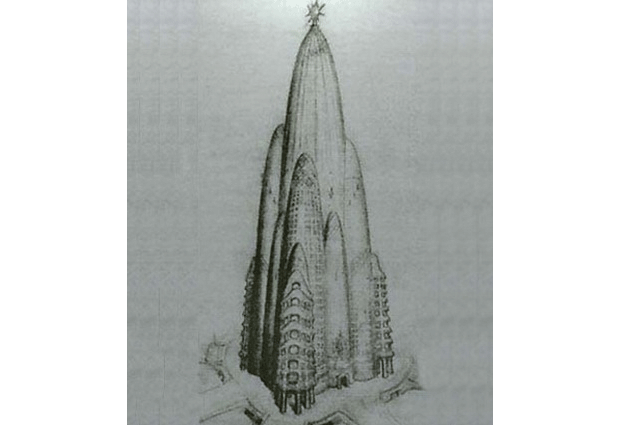 |
|
The Illinois
The Illinois was a proposed mile-high (1,609 meters/5,280 feet)
skyscraper, envisioned by Frank Lloyd Wright. Wright believed that it
would have been technically possible to construct such a building even
at the time it was proposed. The design included 528 stories, with a
gross area of 18.46 million square feet.
Interesting Fact: A number of problems occurred in Wright’s design of
The Illinois including space that was needed to service the elevators
which would occupy all of the space available on the lower floors, thus
defeating the purpose of the building’s height.
|
|
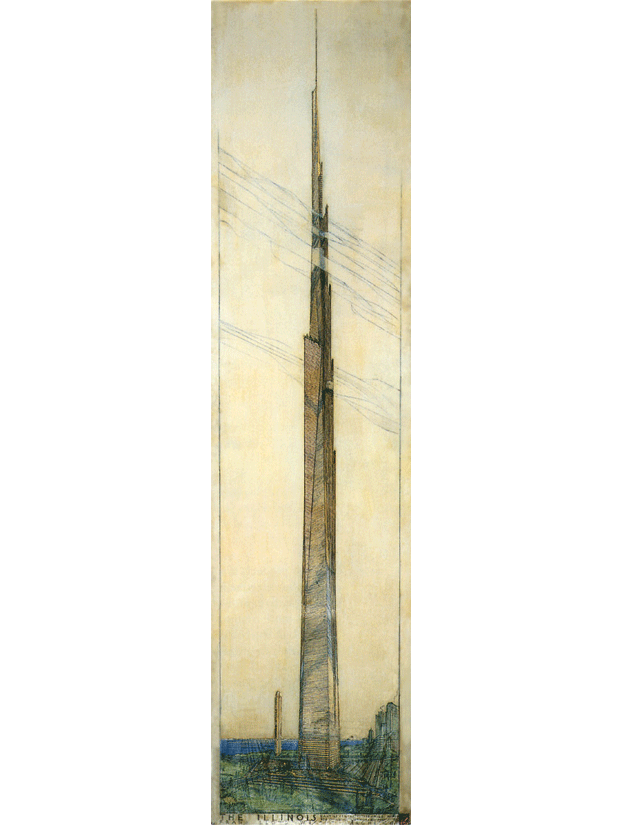
|
|
Fourth Grace
Despite what many believe was the ugliest of all the proposals,
architect Will Alsop entered the winning design for this project and
named it “The Cloud”. The projects name (Fourth Grace) is due to the
development being located adjacent to the three historic buildings at
the Pier Head site known as “The Three Graces”. The project was
cancelled in 2004 due to spiraling costs.
Interesting Fact: The Fourth Grace was designed for office space, a
107-room hotel and 50,000 sq ft of community facilities, including a
bar, restaurant and viewing gallery.
|
|
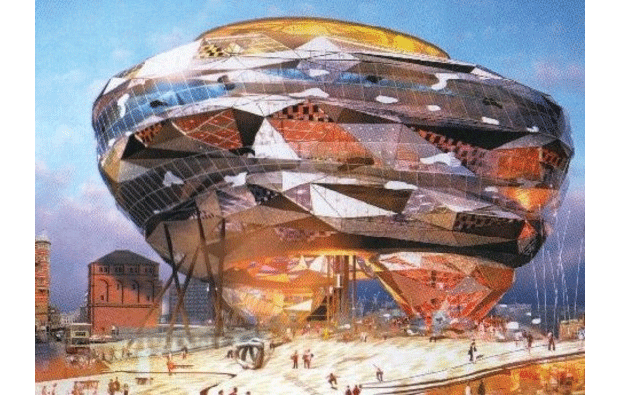
|
|
Beacon of Progress
Plans called for a 457 meters / 1500 foot stone tower in Jackson Park,
Chicago, on the site of the 1893 Chicago World’s Fair. French-born
architect and MIT Professor Désiré Despradelle came up with the winning
design. With more financial backing the structure would have been by far
the tallest man-made object in the world.
Interesting Fact: The design called for an amphitheater at the base to
seat 100,000 people and sweeping piers that would extend into Lake
Michigan for regattas.
|
|
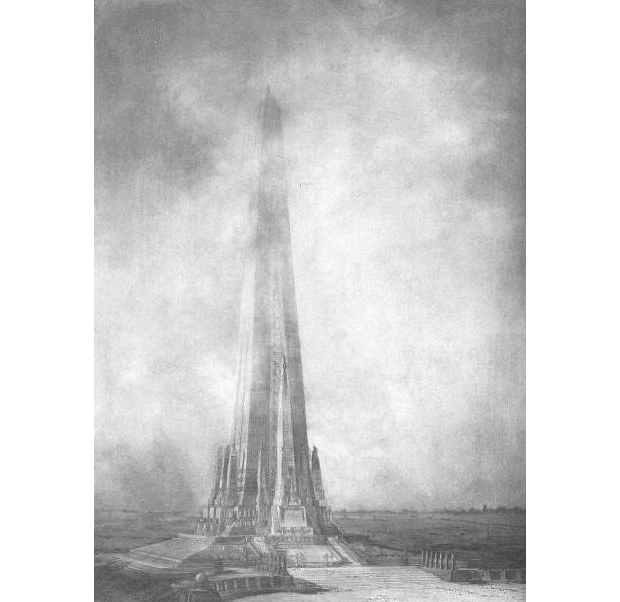 |
|
Ville Contemporaine
The Ville Contemporaine was to house three million inhabitants and was
designed by the French-Swiss architect Le Corbusier. The centerpiece of
this plan was the group of sixty-story skyscrapers built on steel frames
and encased in huge curtain walls of glass. They housed both offices and
the apartments of the most wealthy inhabitants. At the very center was a
huge transportation center on different levels that would include depots
for buses and trains, as well as highway and an airport at the top.
Interesting Fact: For a number of years French officials had been
unsuccessful in dealing with the squalor of the growing Parisian slums,
Le Corbusier thought this design was an efficient way to house large
numbers of people in response to the urban housing crisis.
|
|
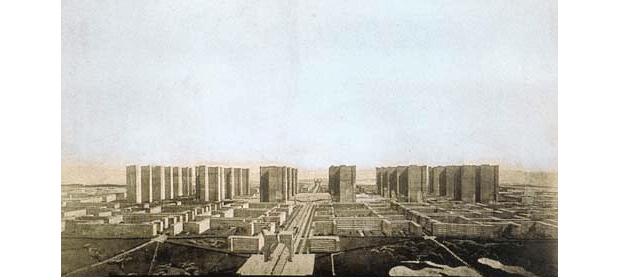 |
|
Tatlin’s Tower
Tatlin’s Tower would have dwarfed the Eiffel Tower in Paris. The tower
was to be built from industrial materials: iron, glass and steel. It was
envisioned as a towering symbol of modernity. The tower’s main form was
a twin helix which spiraled up to 400 m/1312ft in height, where visitors
would be transported around with the aid of various mechanical devices.
Interesting Fact: At the base of the structure was a rotating cube which
was designed as a venue for lectures, conferences and legislative
meetings. The cube would complete a rotation in the span of one year.
Above that cube would be a smaller pyramid housing executive activities
and completing a rotation once a month.
|
|
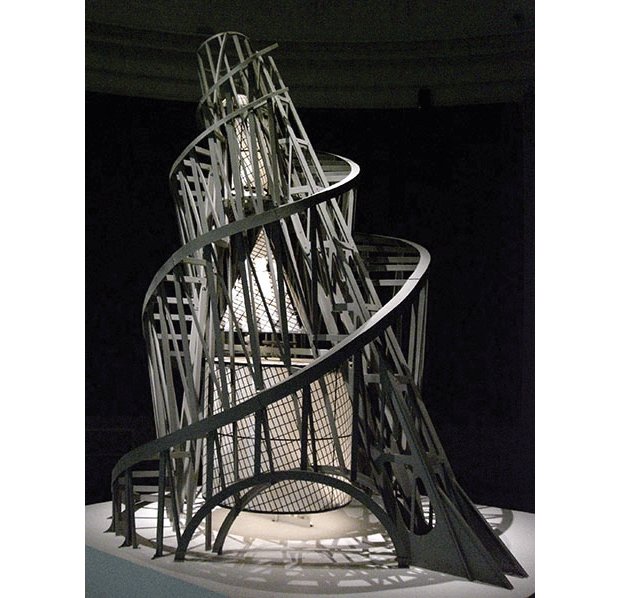 |
|
Shimizu Mega-City Pyramid
The Shimizu Mega-City Pyramid was a proposed project for construction of
a massive pyramid over Tokyo Bay in Japan. The structure would be 12
times higher than the Great Pyramid at Giza, and would house 750,000
people. It would be the largest man-made structure on Earth. The pyramid
structure would be composed of 55 smaller pyramids stacked five high.
Each of these smaller pyramids would be about the size of the Luxor
Hotel in Las Vegas.
Interesting Fact: The reason this project can not be built is the design
of the Mega-City Pyramids relies on the future availability of
super-strong lightweight materials that are currently unavailable.
|
|
 |
|
Ultima Tower
This design is obviously more of a far fetched vision than a seriously
considered project but I wanted to include it in this list because it’s
really cool. Architect Eugene Tsui originally conceived the idea of the
Ultima Tower as part of a study of the compact urban area of San
Francisco. The structure would utilize atmospheric energy conversion by
converting the difference in atmospheric pressure at the top and bottom
of the structure into electrical power. The Ultima Tower is 500 stories
tall (two miles high) and is intended to house one million residents.
Interesting Fact: The structure’s shape is modeled after the tallest
structure not made by man– African termite nests.
|
|
 |
|
Palace of Soviets
If the Palace of Soviets was built, it would have become the world’s
tallest structure. It was to be built on the site of the demolished
Cathedral of Christ the Saviour. A public international contest to
design the Palace attracted 272 concepts from architects all over the
world. The contest was won by Boris Iofan’s who literally expressed the
idea of “Lenin atop the skyscraper” in the most clear form.
Interesting Fact: Construction was actually started on this project in
1937 and was terminated because of the German invasion. In 1942 its
steel frame was disassembled for use in fortifications and bridges.
Also: The Cathedral was rebuilt in 1995-2000.
|
|
 |
|
Volkshalle (The Great Dome)
The Volkshalle (People’s Hall), was a huge monumental building planned
by Adolf Hitler and his architect Albert Speer. It was to be the
capital’s most important and impressive building in terms of its size
and symbolism and the architectural centerpiece of Berlin. Thankfully
the Great Dome was never built due to the break out of the war.
Interesting Fact: What makes the Volkshalle even more interesting is the
illustration plans (pictured above) show a pedestal with the Nazi eagle
figure. The eagle along with the pedestal and just the right shadowing
gives an illusion in the form of Hitler’s face and is believed designed
to appear only at a particular time of the year.
|
|
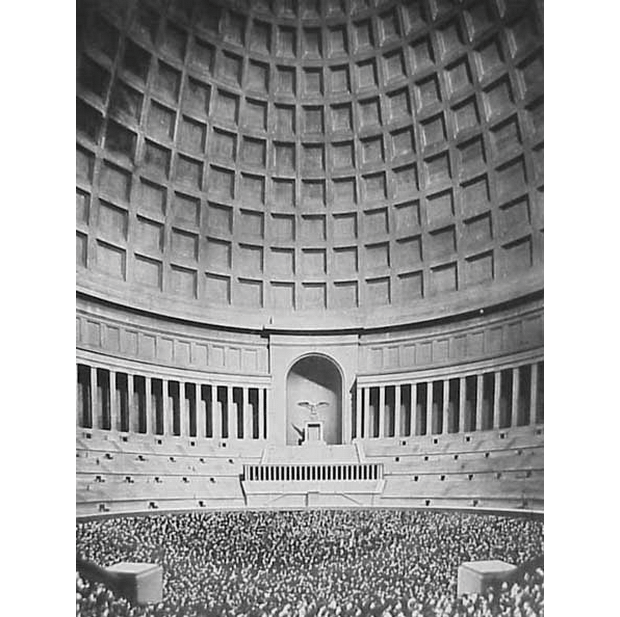 |